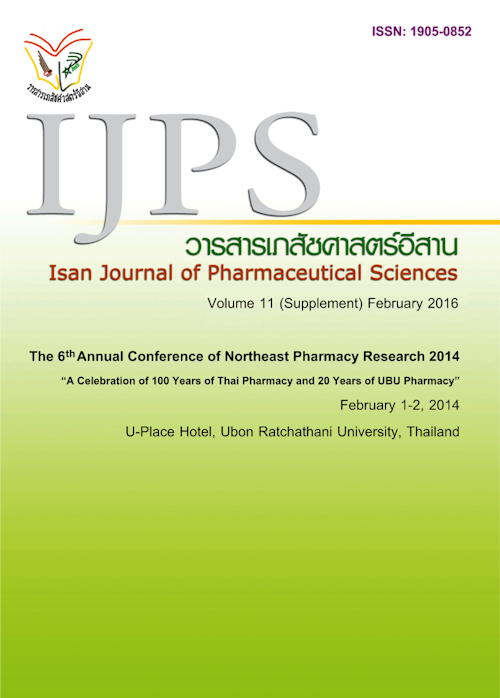Antimicrobial activity of Eupatorium odoratum extract against Methicillin-Sensitive Staphylococcus aureus and Methicillin-Resistant Staphylococcus aureus
Main Article Content
Abstract
Introduction: Skin infection is a common public health problem mostly caused by Staphylococcus aureus. Eupatorium odoratum (Asteraceae) is a Thai herb traditionally employed for bacterial skin infection. The objective of this study were to determine antimicrobial activity of the E. odoratum extract on Methicillin-Sensitive S. aureus (MSSA) and Methicillin-Resistant S. aureus (MRSA). Materials and Method: Antimicrobial activity of E. odoratum against MSSA and MRSA was determined using agar well diffusion. Minimum Inhibitory Concentration (MIC) and Minimum Bactericidal Concentration (MBC) were determined by microdilution method. In addition, the content of the chemical markers, (total phenolic, flavonoids, and anthocyanin), and tannin contribution of the extract were analyzed. Results: The methanolic extract showed the highest antimicrobial activity with the lowest MIC and MBC compared to the ethanolic and aqueous extracts. MIC and MBC of the E. odoratum methanolic extract were 1.67±0.94 and 2.75±2.05 mg/ml for MSSA, and 1.00±0.34 and 6.25±4.01 mg/ml for MRSA, respectively. Tannin content in the methanolic extract was the highest (75.60±6.90%) showing that antimicrobial activity of the E.odoratum extract corresponded to the tannin contribution. On the other hand, total phenolic, flavonoids, and anthocyanin contents did not rely on their antimicrobial activity. Conclusion: These observations suggested significant value of the methanolic extract of E. odoratum as a promising antibacterial compound against MSSA and MRSA.
Article Details
In the case that some parts are used by others The author must Confirm that obtaining permission to use some of the original authors. And must attach evidence That the permission has been included


